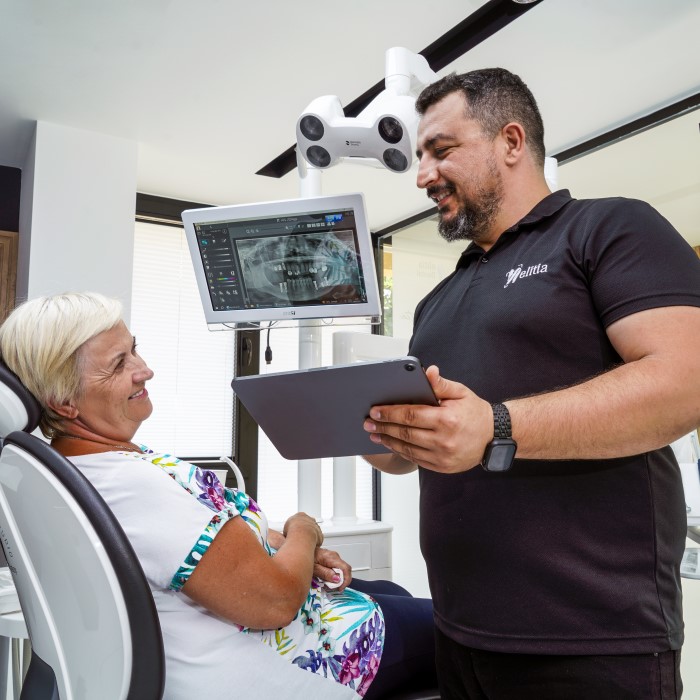HOW THEY ARE MADE AND WHY WE USE THEM
What Is An Implant Surgıcal Guıde?
An implant surgical guide allows a dental surgeon to place an implant in a very specific, pre-planned location to give the most ideal depth, angulation, and size of implant to fit the space. It is essentially a hard acrylic mouthguard that fits over the adjacent teeth to keep it stable. It allows the implant to only go in one location, and to one depth, allowing the implant to be placed very accurately and safely.

Why Use A Surgical Guide?
Before implant surgical guides were invented, or in cases where a dentist can’t or doesn’t want to use a guide, the surgeon placing an implant would have to open the gums and assess the bone width at the time of surgery. This procedure increases the surgical trauma and causes more swelling and pain after the surgery.
Surgical guide applications are one of the advantages offered to us by the developing technology. Thanks to three-dimensional images, the planning made on simulation programs eliminates uncertainty and risks. Surgical guides ensure that the implants are placed in the correct position, as well as that the surgical procedure can be performed without sutures (flapless implant). With this technique, the duration of the surgical procedure is minimized and the gingival healing takes place in a very short time after surgery.
What Is The Process Of Making An Implant Surgical Guide?
The process begins with a digital impression of the top and bottom teeth or dentures when possible. We then take a CBCT x-ray to get a 3D image of the teeth where we plan to place implants. We then use special software to combine the 3D x-ray with the 3D impression of the teeth after we digitally design and add in teeth to the spaced where implants are to be placed. From here, the dentist digitally selects which length and width of implant is most ideal and sets it in the most appropriate depth and angulation to be best suited for the crown that will eventually be placed onto the implant after healing is done. The process is fast, safe, and pain free.
